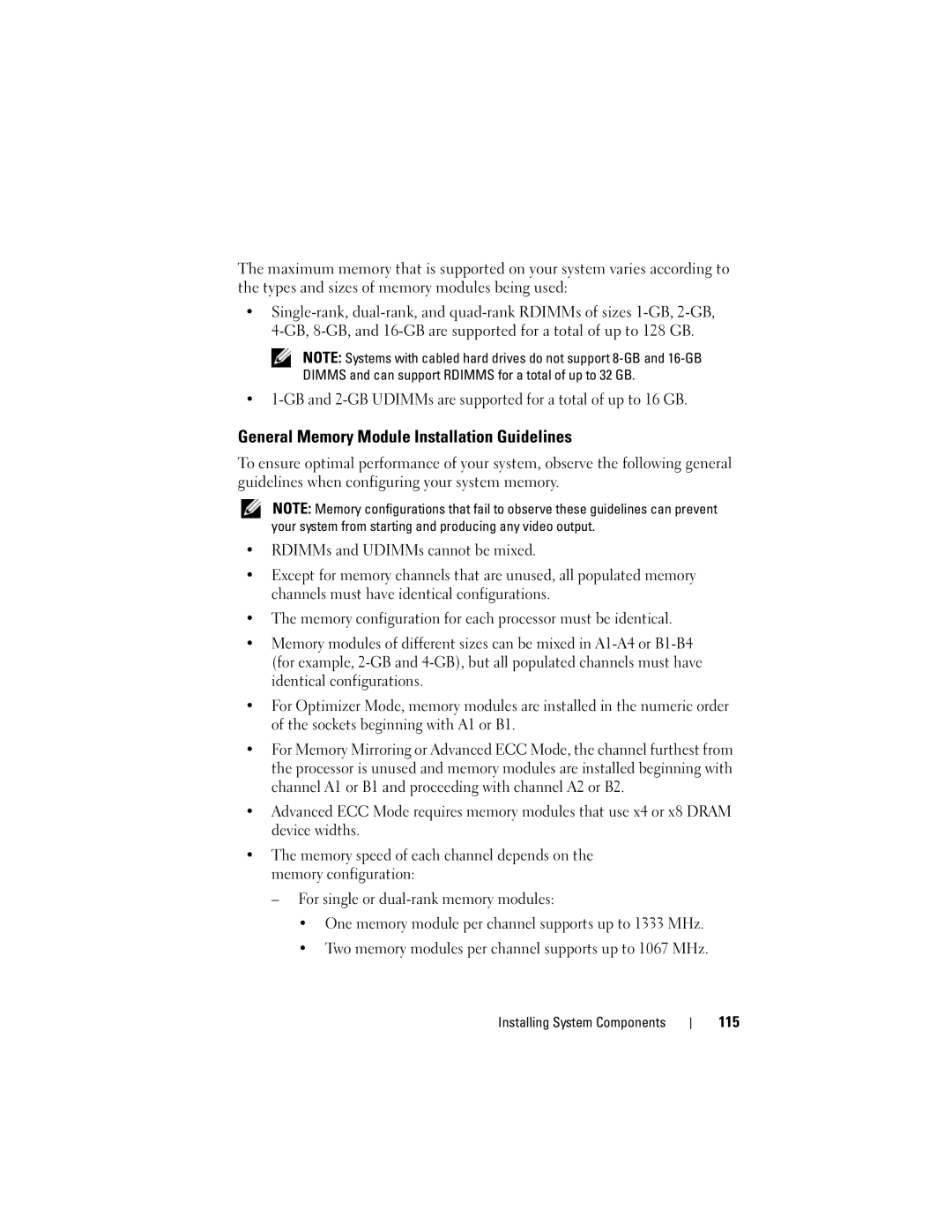
The maximum memory that is supported on your system varies according to the types and sizes of memory modules being used:
•
NOTE: Systems with cabled hard drives do not support
•1-GB and 2-GB UDIMMs are supported for a total of up to 16 GB.
General Memory Module Installation Guidelines
To ensure optimal performance of your system, observe the following general guidelines when configuring your system memory.
NOTE: Memory configurations that fail to observe these guidelines can prevent your system from starting and producing any video output.
•RDIMMs and UDIMMs cannot be mixed.
•Except for memory channels that are unused, all populated memory channels must have identical configurations.
•The memory configuration for each processor must be identical.
•Memory modules of different sizes can be mixed in
•For Optimizer Mode, memory modules are installed in the numeric order of the sockets beginning with A1 or B1.
•For Memory Mirroring or Advanced ECC Mode, the channel furthest from the processor is unused and memory modules are installed beginning with channel A1 or B1 and proceeding with channel A2 or B2.
•Advanced ECC Mode requires memory modules that use x4 or x8 DRAM device widths.
•The memory speed of each channel depends on the memory configuration:
–For single or
•One memory module per channel supports up to 1333 MHz.
•Two memory modules per channel supports up to 1067 MHz.
